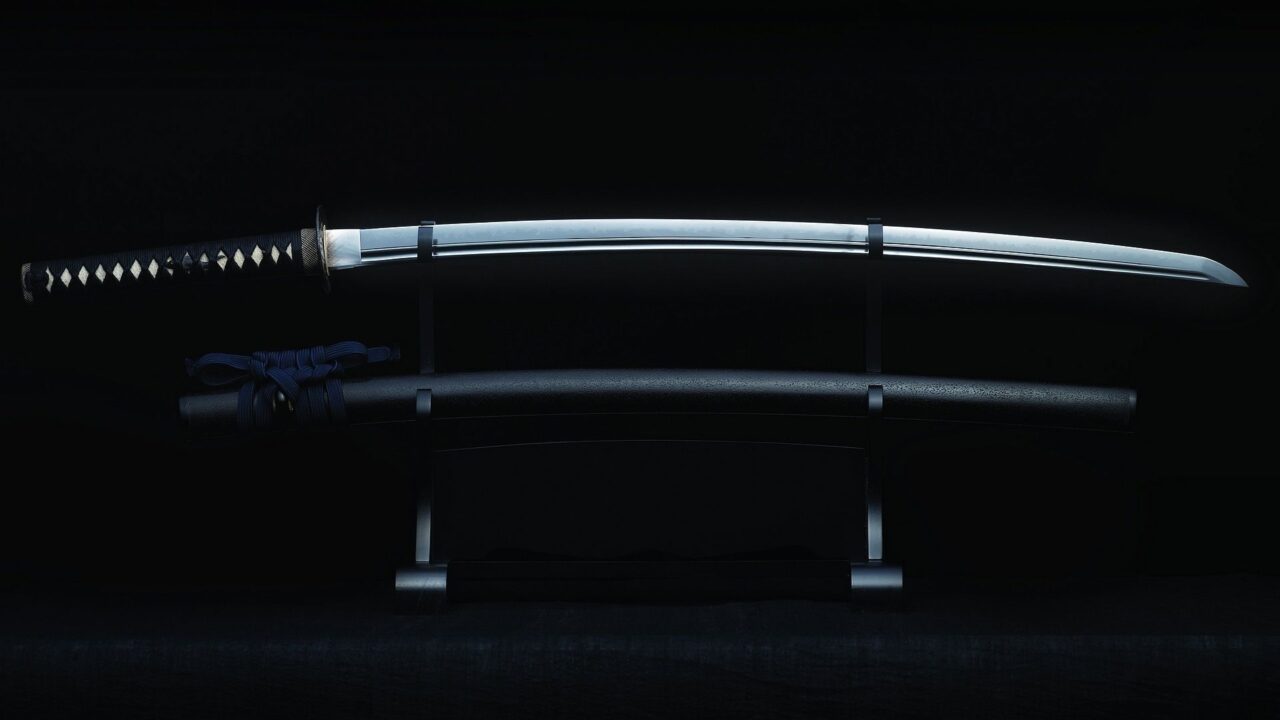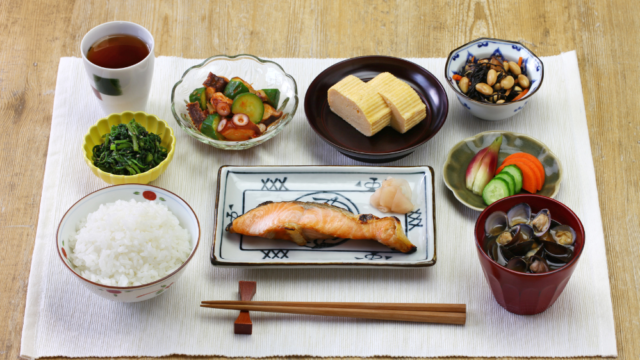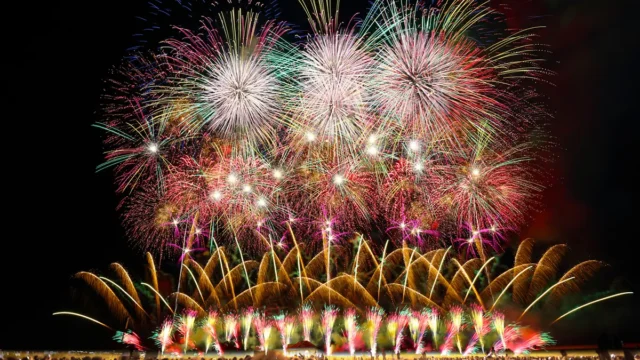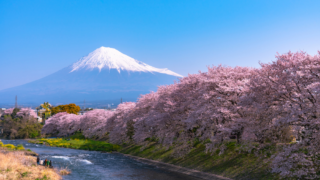The Tenka Goken refers to five particularly renowned Japanese swords: “Dojigiri Yasutsuna,” “Onimaru Kunitsuna,” “Mikazuki Munechika,” “Odenta Mitsuyo,” and “Juzumaru Tsunetsugu.”
The pronunciation of Tenka Goken is “ten-ka-go-ken” or “ten-ga-go-ken.” While there are various theories about its origin, the term “Tenka Goken” was already in use during the Muromachi period and became fully established after the Meiji era. These five swords are all classified as “tachi” under the categorization of Japanese swords.
Japanese swords are often associated with their use as weapons, but today they are highly valued as works of art. Particularly old swords, known as “koto,” are sometimes owned by individuals for their aesthetic value.
Due to their significance, the Tenka Goken are designated as National Treasures, Important Cultural Properties, or Imperial Properties. When displayed at places like the Tokyo National Museum, they attract many visitors who come to admire their beauty.
Now, let’s delve into the details of each of the Tenka Goken.
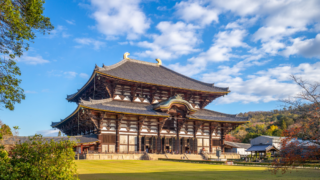
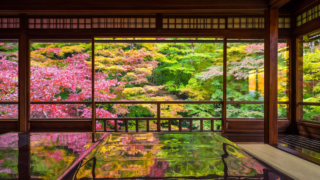
Dojigiri Yasutsuna: The Legendary Demon Slayer
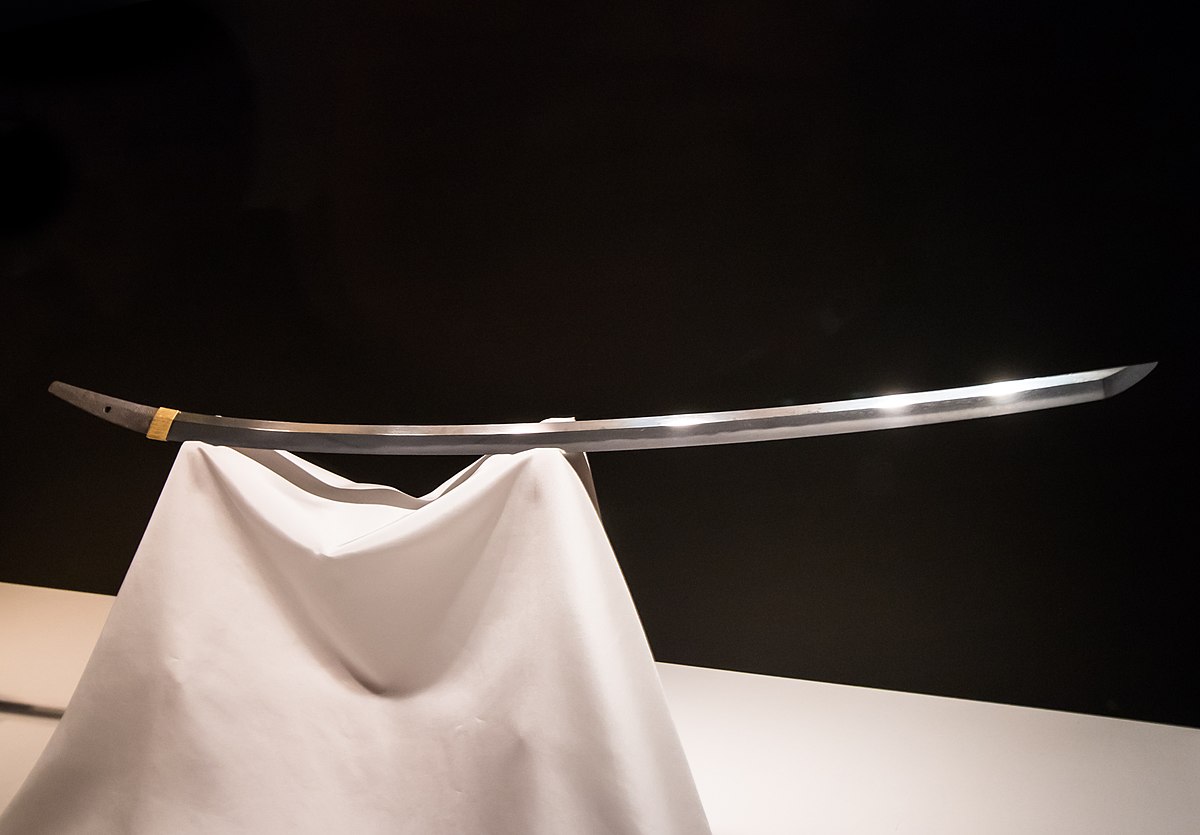 Dojigiri Yasutsuna
Dojigiri Yasutsuna Dojigiri Yasutsuna
Dojigiri YasutsunaDojigiri Yasutsuna is also linked to the legend of the mid-Heian period warrior Minamoto no Yorimitsu, who used this sword to behead the dreaded oni (demon) Shuten Doji, who terrorized people from his lair on Mount Oe in Tanba Province. This legendary feat is the origin of the sword’s name, “Dojigiri.”
This famous sword is exhibited at the Tokyo National Museum about once a year, attracting many visitors who come to admire its beauty and historical significance.
Onimaru Kunitsuna: The Protector’s Blade
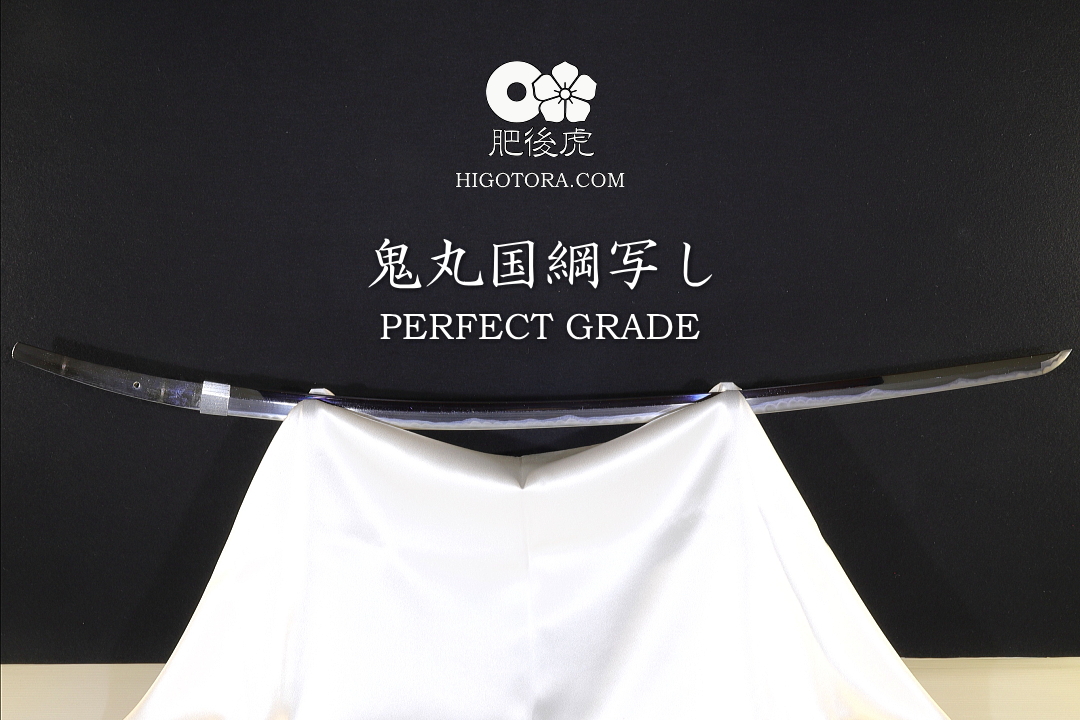 Onimaru Kunitsuna
Onimaru KunitsunaQuote:https://www.higotora.com/blog/omk/
Onimaru Kunitsuna is a tachi sword crafted by the Kamakura-period swordsmith Awataguchi Kunitsuna. It is the only sword among the Tenka Goken that is part of the Imperial Household’s collection, known as a “Gyo-butsu” (Imperial Property). The Awataguchi school is renowned for producing numerous famous swords, including Onimaru.
This tachi has a blade length of approximately 78 cm and a curvature of about 3.2 cm. It is well known as a treasured sword of the Hojo family. The name “Onimaru” (Demon’s Circle) originates from a legend in which Hojo Tokiyori, the 5th regent of the Kamakura shogunate, used this sword to dispel a demon that was haunting him in his nightmares. Therefore, Onimaru Kunitsuna is often associated with the image of a sword that cuts through demons.
 Onimaru Kunitsuna
Onimaru KunitsunaThere is a tradition that owners of this sword faced misfortune in battles, which led to its avoidance even by the great sword enthusiast Toyotomi Hideyoshi.
Due to its status as an Imperial Property, Onimaru Kunitsuna is not designated as a National Treasure or an Important Cultural Property. Additionally, it is rarely displayed to the public, and photographs of it are limited to those taken during these rare exhibitions.
Mikazuki Munechika: The Crescent Moon Sword
 Mikazuki Munechika
Mikazuki MunechikaMikazuki Munechika is a tachi sword crafted by the renowned Heian-period swordsmith Sanjo Munechika. This National Treasure is housed in the Tokyo National Museum. Sanjo Munechika, who lived in Sanjo in the Yamashiro Province (present-day Kyoto Prefecture), is widely recognized as a master swordsmith of the late Heian period.
This sword is praised as the “most beautiful” among the Tenka Goken for its elegance and has long been regarded as a “masterpiece among masterpieces.” Even those who are not well-versed in Japanese swords often recognize the name “Mikazuki.”
 Mikazuki Munechika
Mikazuki MunechikaThe name “Mikazuki” (Crescent Moon) is derived from the crescent moon-shaped patterns that appear on the blade. The tachi has a blade length of approximately 80 cm and a curvature of about 2.7 cm. It was once a treasured possession of the Ashikaga family and later passed down through the Tokugawa shogunate.
Mikazuki Munechika is exhibited at the Tokyo National Museum about once a year, attracting many visitors who come to admire its beauty.
Odenta Mitsuyo: The Mighty Warrior’s Sword
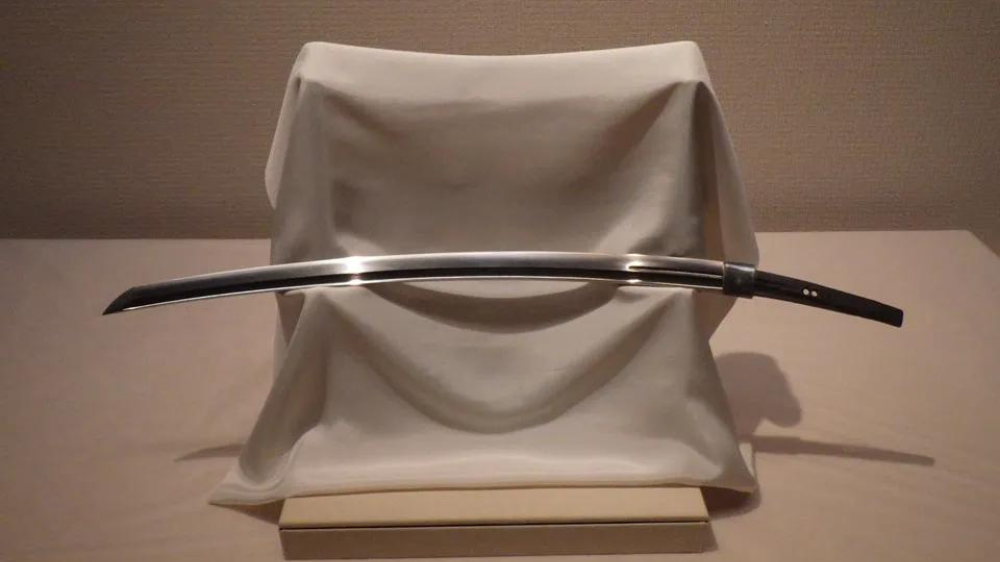 Odenta Mitsuyo
Odenta Mitsuyoswordsmith Miike Denta Mitsuyo. This National Treasure is housed by the Maeda Ikutokukai Foundation in Meguro, Tokyo. Originally, this precious sword was passed down through the Ashikaga shogunate family, then owned by Toyotomi Hideyoshi, and finally handed down to Maeda Toshiie. Since then, it has been carefully preserved by the Maeda family.
The tachi has a blade length of approximately 66 cm and a curvature of about 2.7 cm, distinguishing it with a shorter blade and broader body compared to other tachi swords.
 Odenta Mitsuyo
Odenta MitsuyoThe name “Odenta” comes from the fact that the Maeda family possessed two swords made by Miike Denta Mitsuyo, one longer and one shorter, and the longer one was called “Odenta.” This sword is also known as a spiritual blade that can ward off illnesses and supernatural entities. For instance, it is said to have cured Toyotomi Hideyoshi’s adopted daughter, Gohime, of her illness and protected Fushimi Castle from spirits.
Odenta Mitsuyo is occasionally displayed at sword exhibitions across the country, attracting many enthusiasts who come to admire its beauty.
Juzumaru Tsunetsugu: The Monk’s Beaded Blade
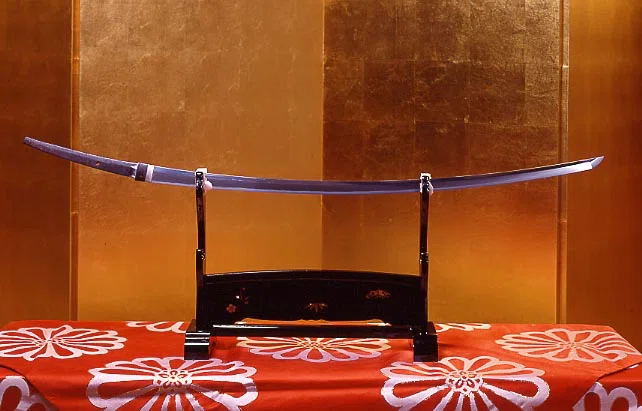 Juzumaru Tsunetsugu
Juzumaru TsunetsuguJuzumaru Tsunetsugu is a tachi sword crafted by the Kamakura-period swordsmith Aoe Tsunetsugu. It is designated as an Important Cultural Property of Japan and is housed at Honkoji Temple in Amagasaki City, Hyogo Prefecture. This sword is said to have been owned by Nichiren, the founder of the Nichiren sect of Buddhism, who received it from a follower for self-defense during his exile to Mount Minobu.
Nichiren wrapped the hilt of this sword with prayer beads (juzu) and used it not as a weapon but as a protective talisman to ward off evil. The name “Juzumaru” (Beaded Sword) is said to have originated from this story.
The tachi has a blade length of approximately 81 cm and a curvature of about 3 cm, making it the longest among the Tenka Goken.
 Juzumaru Tsunetsugu
Juzumaru TsunetsuguAfter Nichiren’s death, Juzumaru’s whereabouts remained unknown for a long time. However, Sozo Sugihara, a sword researcher for the Imperial Household Ministry, discovered it at an auction held by a noble family. He used his own funds to acquire the sword and offered to return it to Kuonji Temple on Mount Minobu, which is associated with Nichiren. However, the temple declined due to doubts about its authenticity. Consequently, Sugihara consulted with Honkoji Temple, a nearby Nichiren sect temple, which accepted the sword. It remains there to this day.
Juzumaru Tsunetsugu is usually not on public display but is exhibited annually on November 3rd during Honkoji’s “Mushiboshi-kai” event.
